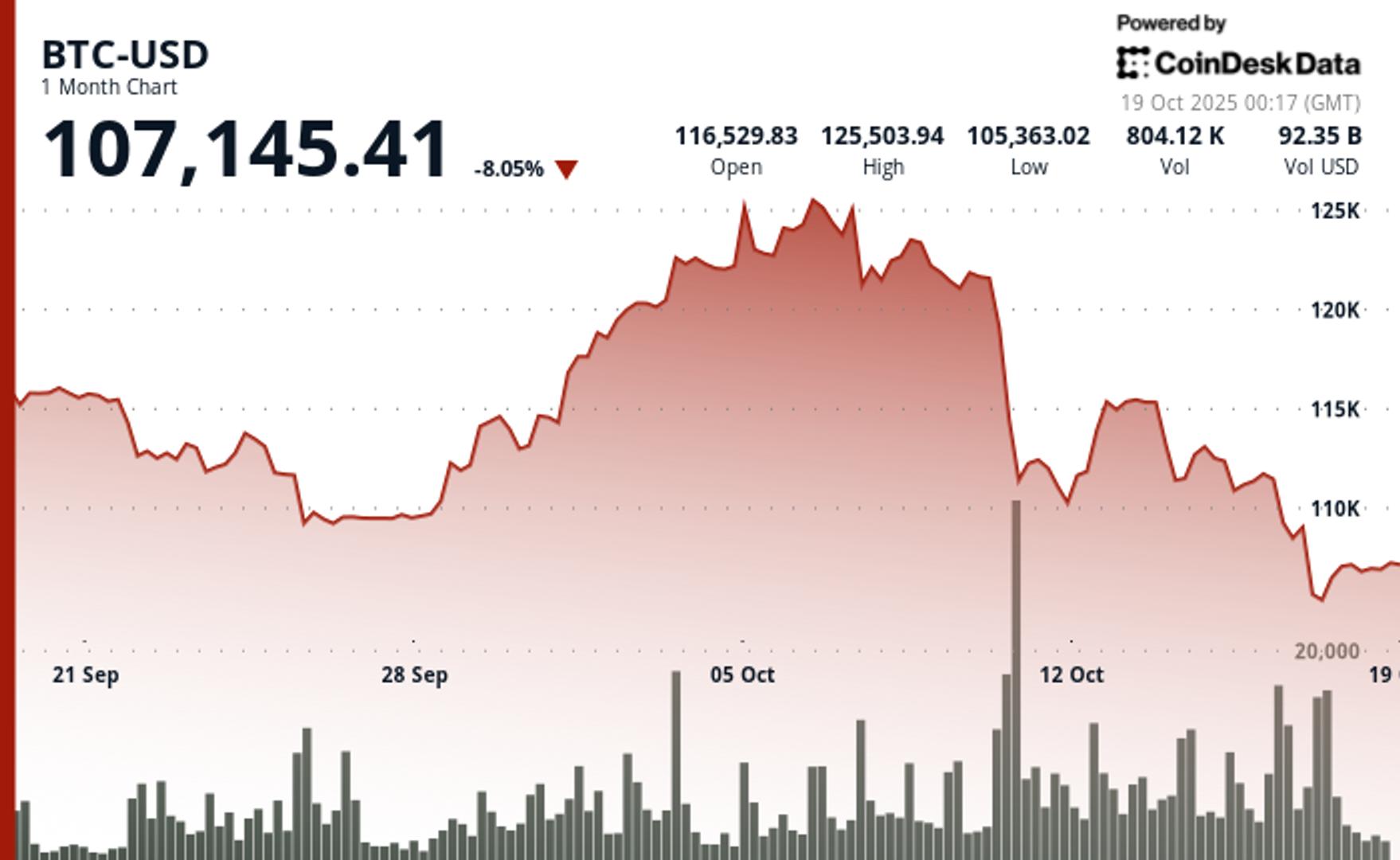
The October swing has not broken the cycle, maintains Alex Thorn, head of research at Galaxy Digital.
The note was first sent to subscribers of Galaxy Research’s Weekly Research Brief and later reprinted on X.
Thorn says the Oct. 10 sell-off began with high leverage that hit tight order books, and then got worse as exchanges’ self-deleveraging limited some short positions by market makers and reduced liquidity at the worst time. It cites about $19 billion in liquidations as bitcoin fell from an Oct. 6 all-time high near $126,300 to an intraday low around $107,000, and ether fell from about $4,800 to about $3,500 before markets stabilized over the weekend.
Risk appetite faded again as macroeconomic jitters resurfaced. Thorn points to weakness in chip stocks, an hawkish turn by the Federal Reserve governor, renewed concerns from regional banks and geopolitical noise. Classic markers of risk aversion reinforced the tone, he notes, with gold and silver setting new records and the 10-year Treasury yield falling back below 4%.
He also points out a cryptocurrency-specific hurdle: digital asset treasury companies have gone cold. He says that with stock prices down across that cohort, there are fewer price-insensitive purchases to implement in cryptocurrencies, adding to short-term fragility even after the initial failure.
In the medium term, however, Thorn remains constructive and highlights three forces that he believes can drive the next leg higher.
First is the capital expenditure on AI. He frames the current wave as a cycle of capital spending in the real economy led by traditional cash-rich companies (hyperscalers, chip makers and data center operators) bolstered by significant US policy support, rather than a repeat of a purely speculative dot-com bubble. He maintains that corporate budgets and government stance point to a long way to go.
Second are stablecoins. Thorn notes that dollar-pegged tokens continue to gain traction as payments advance, broadening participation, deepening liquidity, and anchoring more activity on public chains. He believes those plumbing effects can support the ecosystem even when price action changes.
Third is tokenization. According to Thorn, moving real-world assets and pieces of traditional market infrastructure onto the chain is moving from pilots to deployment, creating new demand for blockchain space and core assets that secure, route and settle that activity. Thorn says the transition benefits platforms linked to that flow.
In that context, he remains optimistic about bitcoin’s “digital gold” role amid lingering doubts about fiscal and monetary prudence. He also sees a favorable setup for majors like ETH and SOL tied to stablecoin usage and tokenization, even if near-term rallies risk stalling below previous highs.
The short-term message is caution: respect lower liquidity, post-crisis psychology, and a “wall of worry” mood. The medium-term message is resilience: there are three tailwinds, he says, to maintain the bullish trend once the markets finish digesting the shock.



